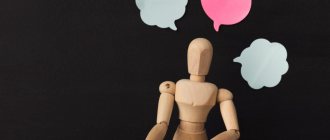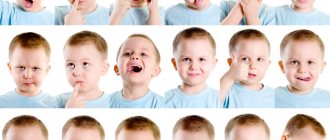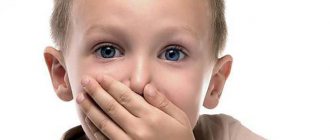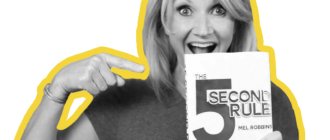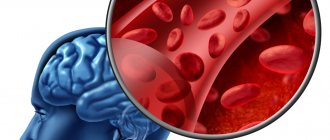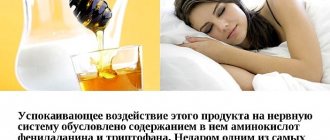Cerebral palsy (cerebral palsy) is a collective concept that generally combines under its name a list of forms and manifestations of central nervous system lesions that are similar in their etiology and symptoms. Most forms are characterized by muscle spasticity, although there are forms in which there is no spasticity, but there are cerebellar symptoms. The name of the forms is associated with the localization of spasticity and the depth of damage to the central nervous system from paresis, partial loss of innervation, to paralysis or plegia, complete loss of muscle function. In the first place, the cause of this disease is birth trauma, which can result in rupture of brain vessels or prolonged hypoxia due to blockage, compression of blood vessels; lack of oxygen for a long time is very dangerous for the brain. Also common causes: herpes, genetic disorders, cytomegalovirus, intoxication, past diseases of the pregnant woman.
The role of massage in the treatment of cerebral palsy in children.
Massage for children with cerebral palsy is always prescribed, but in the treatment process it still plays one of the main roles, not the main one. What is most important in the treatment of cerebral palsy cannot be said unequivocally, I would highlight the most important: drug treatment, exercise therapy (in all its diversity), massage, and in the late recovery period, orthopedic devices such as corsets, splints, verticalizers. The role of massage is great in conjunction with the above effective methods of treatment, and small when used alone. You have to act without massage if it turns out to be contraindicated, this happens when epilepsy or convulsions accompany the main diagnosis.
Goals and objectives of massage for cerebral palsy in children.
The goals of massage in the treatment of cerebral palsy in children are to reduce spasticity; prevention of the formation of contractures, prevention of stagnation of metabolic processes, extinguishing pathological reflexes, normalizing the functioning of the nervous system, as far as possible. To achieve such goals, it is necessary to solve problems to improve the mobility (elasticity) of tendons, relaxation of muscles and ligaments.
Goals such as a cure for a disease are difficult to achieve; in most cases, it is not possible to completely cure a child. Goals must be realistic, often they are long-term, so I recommend that parents save their nerves, strength and resources for long-term rehabilitation of the child. Don’t be fooled by promises to “get your child back on his feet,” those who work with such diagnoses understand perfectly well that miracles don’t happen, and someone takes advantage of the parents’ feelings and makes money from it. Achieving results in rehabilitation always requires a lot of work by specialists, the child and parents.
Infant therapeutic medical massage
Many types of massage are beneficial only at a certain stage of a child's development. This is how infant massage is distinguished, which is carried out in the first months of life up to a year, even for healthy babies. Its goals are:
- General strengthening of the body, increasing immunity - the use of medications and immunomodulators can harm the child’s body, so doctors recommend hardening and medical massage to prevent diseases;
- Relieving hypertonicity - in the first months, many children develop muscle strain caused by a long, almost motionless stay in the womb; as the central nervous system develops, the excess tone goes away, but sometimes disturbances occur; massage helps relieve tension and pain, produces a calming effect;
- Improving motor skills and coordination of movements - prevents developmental delays, the child becomes more active, begins to roll over and crawl earlier;
- Treatment of diseases of the musculoskeletal system - disorders, dislocations, torticollis, flat feet;
- Correction - performing maintenance therapy to consolidate the results of the main course;
Massage for premature babies is separated from regular infant massage - in this case, there are often disturbances in the functioning of the nervous system that should be corrected. Massage sessions help such children by improving the functioning of the central nervous system, improving sleep, and relieving muscle hypertonicity.
IMPORTANT: It is better to entrust therapeutic massage to a child under one year of age to a qualified practitioner who is well aware of the features of children's anatomy and the processes occurring in the child's body. The mother may be undergoing a medical procedure to reduce the baby's emotional stress.
It is important to do massage with exercise therapy for cerebral palsy.
The most important condition for achieving positive results in the treatment of cerebral palsy in children is the addition of exercise therapy massage with physical therapy. Moreover, it is advisable to carry out massage with exercise therapy in one procedure. Why?
1. This is due to the fact that muscles, ligaments and tendons need to be prepared for physical therapy, i.e. warm up and knead.
2. No massage can replace movement. Even passive exercises performed by a massage therapist will have irreplaceable benefits on the child’s body. And if it is possible to achieve the appearance of active movements controlled by the child, this is a big victory. Massage with exercise therapy for cerebral palsy in children can be carried out sequentially, i.e. first a general massage, then exercises or perhaps stirring.
3. The benefits of therapeutic gymnastics are also in teaching a child active, controlled movements that fill our lives, but we do not think about them, but simply use them. When the parts of the brain that provide smoothness, continuity, accuracy, strength and, in general, the ability to move limbs and other parts of the body are disabled, then through gymnastics we try to stimulate the brain to create neural pathways bypassing the affected areas, sometimes this is successful.
Where to start massage for a child with cerebral palsy?
It is classically correct to start a massage from the back, but there are deviations from the rules. This usually depends on the tolerability of the procedure, or the individual characteristics of the child’s condition or behavior. We start with a back massage, because this is how we first treat the places where the spinal nerves exit the spinal canal, which then branch out into the muscles and other tissues. Those. This is a preliminary reflex effect on the muscles without touching them with your hands, and then the limbs are massaged. The sequence and principles of massage of the arms and legs for cerebral palsy depend on the form of the disease and the condition of the soft tissues of the extremities. If the child is small, then his strength limit for the procedure is less, or he may be very capricious, especially in the tummy position. In such cases, you have to do a massage according to an individual scheme for the child. It happens that we start a massage with problem areas right away; it is important to treat the most necessary areas, because... the child may begin to be capricious 20-30 minutes after the start of the procedure and things simply will not reach the right places.
Massage and exercise therapy for cerebral palsy in children under one year of age
Massage procedures play a special role for the health of children under one year of age, since it is then that the bulk of reflexes, as well as musculoskeletal structures, are formed. If you miss the moment, the disease will progress, and it will be much more difficult to correct its consequences. So, the main methods of working with children with cerebral palsy under the age of one year are:
- Reflex gymnastics
. The procedure is best performed on a flat, hard surface - for example, a changing table. The specialist warms the hands and moisturizes them with cream - this is very important so as not to form a negative conditioned reflex in the baby towards the doctor or one of the parents performing the massage. The technique is aimed at forming reflex muscle reactions, such as pulling up, getting on all fours, etc. This also includes the development of the joints of the lower extremities. - Getting rid of spasticity in the limbs.
This is the main problem of children with cerebral palsy, which can be positively affected by various exercises related to flexion and extension of the limbs under conditions of fixation. The same work happens with the neck muscles: the specialist carefully turns the baby’s head to the sides, lifts it, and performs other manipulations.
During any such activities with children under one year of age, it is very important to monitor the child’s condition and mood. Under no circumstances should you do anything against his will or force him to do anything. It is important to follow the principle of gradualism. It is possible that the first classes will take no more than a couple of minutes, and only over time will last longer.
It is important that work with newborns is carried out exclusively by professional doctors-specialists in exercise therapy, pediatrics and neurology, since during the period of skeleton formation and ossification of the skull, it is especially easy to cause injury through negligence.
Therapeutic foot massage for children with cerebral palsy.
Two legs of an adult with aching joints
Almost all forms of cerebral palsy affect the limbs. Most often you have to work with muscle spasticity. The legs are the most difficult area due to the massiveness of the muscles. Despite the fact that the child may be small, the leg muscles are already so strong that you have to make a lot of effort and spend a lot of time on them to achieve any lasting relaxation. Leg massage for cerebral palsy in children can be carried out according to the classical scheme, but techniques for stretching spastic muscles are required, this greatly helps to relax the muscles. You can even say that massage is a preliminary warm-up for the muscles before stretching. We start massaging with stroking techniques, but this is only the first contact, so to speak, to notify the nervous system about the beginning and nature of the procedure, then rubbing, kneading, vibration techniques. Most of all, of course, we use kneading, which we alternate with stretching muscle groups. Spasticity in the legs in most cases affects the posterior muscle groups of the thigh and lower leg, adductors, pelvic muscles, and iliopsoas. The internal muscles of the pelvis can only be affected by stretching. Therapeutic leg massage for children with cerebral palsy is done at a slow pace, deeply, with an emphasis on the calf muscles, shin flexors, with the study of similarities and places of their attachment to the bones, alternating with passive, stretching spastic muscles, movements in the hip, knee and ankle joints. I also consider it important to have a tonic massage of antagonists of spastic muscles. We carry it out deeply at a fast pace so that the muscles tense. When the muscles of the antagonists are tense, the tense muscles relax better.
About techniques and features of conducting
Massage for cerebral palsy can be carried out using several methods, the specifics of which will differ. Each of their techniques will help to achieve muscle relaxation, as well as restore certain brain functions.
To relax the muscles, a downward massage is performed, during which an anesthetic agent is rubbed into the skin. This could be sunflower or peach oil, lanolin, anesthesin.
To reduce muscle hypertonicity, you can use an electric vibrator and perform a sound massage, which consists of massaging the abdomen and simultaneously pronouncing hissing sounds or the sound “r-r-r”. You can also achieve a decrease in muscle tone by rocking the baby on a large gymnastic ball, placing him on his back or stomach. How to do massage for cerebral palsy depends on its type.
Classical
Classic therapeutic massage helps to improve the nutrition and breathing of muscle tissue, normalize the functioning of elements of the nervous system, and normalize muscle tone. Stroking, rubbing, vibration and kneading movements are carried out.
Initially, the doctor massages the neck and collar area, then moves on to the forearm, back, buttocks, and side surfaces of the body. Thoroughly massage the muscles under the shoulder blades and those that are attached to it. Finally, move on to the stomach, legs and arms (hands and feet).
In the acute and early stages of the disease, techniques such as stroking and rubbing are used (this is especially true for hand massage for a child with cerebral palsy). If spastic diplegia is present, massage is performed with an emphasis on the extensor muscles.
An approximate course of classical massage for a patient with cerebral palsy is 12-15 sessions.
Improves breathing
In case of cerebral palsy, massage is required to improve respiratory function. This is necessary due to disruption of the muscles that are involved in breathing. It is necessary to regulate the tone of muscles such as the diaphragm, pectoralis major, intercostal muscles, and pectoralis minor.
Massage that improves breathing is carried out by:
- stroking and light kneading of the thoracic region, abdominal muscles such as obliques and rectus;
- acupressure performed along the costal arches and areas in which the diaphragm is attached to them;
- intensive kneading, squeezing, pinching the trapezius muscle;
- segmental kneading of the vertebrae of the lower cervical and upper thoracic region, sternum;
- acupressure, during which symptomatic points that affect the respiratory function are treated.
Stimulating the development of the bone apparatus
Massage for children with cerebral palsy at home is carried out to normalize the growth of tubular bones. They use techniques such as rubbing, vibration, shaking, punctuation, performed in areas where the tubular bones are localized.
Using this technique, it is possible to cause reflex irritation of areas with nerves and vessels that are responsible for trophism and accelerate the growth of bone elements. The heel bones are carefully treated in case of illness in children and adults. This section is a reflex zone, which has a specific effect on the entire bone apparatus.
The hands are beaten, in particular the palms, which effectively affects the muscular system of the upper extremities. Massage of flat bones is carried out by tapping on the protrusions.
Segmental
In case of cerebral palsy, it is necessary to influence the spinal cord through segmental massage. During the procedure, certain areas of the skin, tendons, ligaments, and muscles are treated. The therapeutic effect extends to the nervous structures of the brain. Massage helps improve blood circulation and tissue trophism in the spinal cord.
Massage movements begin from the lower back (sacrum) and end with the cervical spine. Next they move on to the shoulder blades, buttocks, intercostal spaces. Use stroking, rubbing, kneading, vibration.
To normalize muscle tone, massage the lumbar and sacral regions. Massaging the cervical and thoracic spine will help eliminate spasticity in the limbs.
According to the Manakov system
According to Manakov's scheme, massage is carried out by vigorous vibration pressure with two or four fingers. In this case, the fingers do not slide over the skin, but easily penetrate deep into the soft tissues. This allows you to eliminate adhesions and painful neoplasms in the form of compactions.
This technique is an excellent tool for the prevention of fibrosis and adhesions in the muscles, nerves and blood vessels, and tendons. Massage helps improve blood circulation and tissue trophism.
Massage movements begin from the center, moving to the periphery.
Spot
Acupressure for cerebral palsy is carried out for several minutes, acting all this time on one specific point. This can be pressing on it, deep intermittent rubbing, kneading clockwise. The procedure helps to relax the muscles and reduce the pathological activity of the clinical manifestations of the disease.
In Chinese medicine, there are about 700 points, by acting on which a therapeutic effect can be achieved.
Speech therapy
For each patient, the body position in which the massage will be performed is selected individually. This avoids the pathological tonic reflex. A person can be placed on his back with a bolster under his neck and his legs bent at the knee joints.
During the massage, facial and chewing muscles are worked out. They involve stroking the forehead, eyebrows, nose, chin, lips. Rubbing, pinching, tapping, and stretching are also used.
Hand massage for children with cerebral palsy.
Hand massage for a child with cerebral palsy is carried out according to the same principle as massage of the lower extremities. Relaxing massage of spastic muscles is usually the flexors of the forearm, hand, fingers, adductors of the arm, pronator of the hand and forearm. A relaxing hand massage begins from the upper sections, i.e. adductors, pectoralis major muscle, latissimus dorsi muscle and their synergists. We apply passive movements in the shoulder joint to the warmed and stretched muscles to stretch the muscles. Next, we stretch the biceps on the shoulder and tone the triceps, and continue passive extension at the elbow joint. We massage the forearm taking into account the tone and make passive movements in the LZS and it is important not to forget about the pronators, after the massage we stretch them with supination, also passive. If the fingers are in a fist, then we massage the hand and stretch the finger flexors by extending the wrist joint with the fingers previously unclenched and fixed.
Hand and foot massage
Start baby massage for cerebral palsy with stroking movements of the hands. Repeat the strokes between each exercise. Rub your hands in a circular motion from palm to shoulder. Lightly knead the shoulder area.
Place the baby on his back and massage his arms from the hands to the shoulder. Use gentle, careful movements. Using grasping movements, use the outer and inner surfaces of the child's arms. Place your thumb on the inside of your baby's hand and the rest of your fingers on the outside.
Exactly the same movements are performed for the legs. Place your baby on his back. Take the baby's right leg and make several stroking movements towards the groin, not depriving the thigh and lower leg of attention. Massaging the kneecap is not recommended.
Grasp the child's leg, rubbing it on all sides in a circular motion. Head towards the pelvis. Knead the front surface of the thigh, rub the sole and foot from the heel to the toes and vice versa. Perform several stroking movements again.
The life of a child with cerebral palsy is a strict routine, in which a special place is given to therapeutic and restorative measures. Many parents are frightened and upset by this diagnosis. Properly constructed rehabilitation, including massage techniques for cerebral palsy, helps to introduce the baby into the children's team and ensures normal communication with other people.
Massage and hand development - video
What kind of massage is given to children for cerebral palsy?
The main type of massage is classic; acupressure is also added. The procedure is carried out in a differentiated manner, taking into account the individual characteristics of the child, the form and severity of the disease.
Vojta therapy is often prescribed to children with cerebral palsy; it is a harsh method and is not suitable for everyone. Children scream a lot during this therapy; in general, the method is based on the principle of irritation, which not every child can do. For example, if there are parallel diagnoses such as epilepsy, then I would recommend coordinating the use of Voight therapy with “ten” neurologists before doing it.
The benefits of massage treatments for cerebral palsy
When diagnosed with cerebral palsy, massage is prescribed only by neurologists for:
- normalization of motor function and increased muscle tone;
- improving muscle conductivity;
- improving the movement of biological fluids;
- preventing restrictions on passive movements in joints;
- normalization of metabolic processes;
- improvement of general condition.
During the procedures, the impact occurs in such a way that tense muscles relax, and weak ones are activated and put into work . Due to active blood circulation, muscle mass begins to increase, and the normalization of metabolic processes has a positive effect on the functioning of internal organs.
When performing massage procedures, you must take into account:
- individual characteristics of the disease and the patient’s condition;
- preliminary medical or physiotherapeutic procedures;
- Exercise therapy exercises prescribed after the session for cerebral palsy.
Usually during the session they use bright and soft toys and relaxing music. And all procedures are carried out from a lying position. The feet, fingers and hands can be additionally fixed depending on the child’s condition. Additionally, massage therapists use various pillows and rollers.
Is it possible to teach massage to parents with cerebral palsy?
It is possible to learn some basic techniques of massage and gymnastics, but it is better for parents to use them between courses, as homework. It will, of course, be more effective to work with a specialist, and the parents’ task is to maintain joint mobility and muscle stretching until the next course of massage, to the extent they can. This approach saves time on the next massage course. Those. The massage therapist no longer spends several sessions trying to return the muscles to their previous state in which they were left on the previous course.
What treatment for cerebral palsy in a child can parents carry out on their own?
From independent actions, we see from practice that parents can master a little massage, elements of exercise therapy, from physio-paraffin, ozokerite, also styling, elements of Vojta therapy, putting on splints, putting them on a verticalizer, and doing classes from a speech therapist-defectologist. Of course, this is not all at a professional level, but such a set of actions is no longer small.
Is it possible to cure cerebral palsy in a child with massage?
Practice shows that massage with all the “additives” gives a good effect to children in the treatment of mild degrees, and not all forms. A complete cure, of course, will not come in any degree or form. Therefore, advice to parents is not to be heartbroken, not to sell everything you have and spend it on all methods of treatment, even to popular charlatans. So far, not even a single ultra-modern center has cured a child from cerebral palsy. You can achieve good results in rehabilitation, but cerebral palsy cannot be completely cured. Even if it is not treated, you should not give up, massage and gymnastics should be done, because the child is growing, you need to try to maintain mobility of the joints.
The age of the child plays an important role in rehabilitation; while the child is small, he may have problems with motivation due to the fact that he tries many times to do some movement, but nothing works. The older the baby, the more conscious the fight against the disease for the right to move, albeit clumsily, becomes. For this, you need to maintain the child’s body in a state of readiness of muscles and joints for movement.
Our center’s specialists provide massages for children with cerebral palsy at home in Moscow. If you want to find a qualified and experienced massage therapist for your child, call +79266057470.
